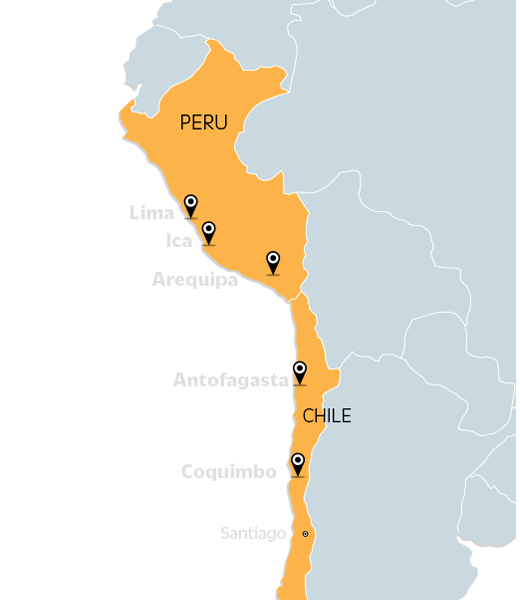
Thousands of people attracted by a surge in seaweed exports to China have rushed to the coasts of Chile and Peru to set up new coastal villages. But China's increasing demand for giant kelp used in the cosmetics and food industries is wiping out the algae, impacting the entire ecosystem of fish, mollusks and crustaceans that live in the forests beneath the sea.

Thousands of people attracted by a surge in seaweed exports to China have rushed to the coasts of Chile and Peru to set up new coastal villages.
Cristian Ascencio Ojeda
Roberth Orihuela Quequezana
Lynne Walker
InquireFirst
General Editor:
Iván Carrillo
Editor / Peru:
Gonzalo Torrico
Photo:
Magaly Visedo-Soriano
Cristian Ascencio Ojeda
Rodrigo Talavera Velarde
Ivan Salcedo Llerena
Web Design:
Miguel Ángel Garnica
Infographics:
Fermín García-Fabila
Translation:
Jessica Valenzuela / Translation to English
Jerusa Rodrigues / Translation to Portuguese